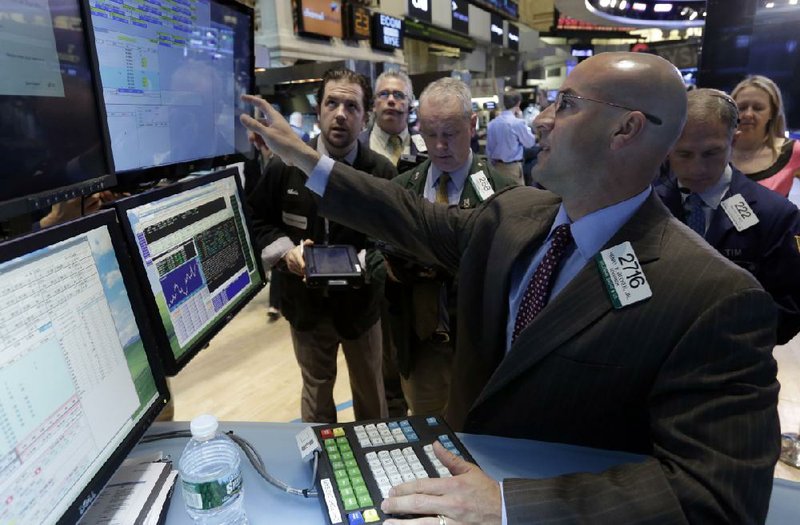NEW YORK - Investors recovered their poise after a shaky start to trading on Wall Street that sent stocks sharply lower.
U.S. markets plummeted immediately after the opening bell Thursday after a global slump prompted in part by an unexpectedly weak report on manufacturing in China. Concern that the Federal Reserve might ease back on its economic stimulus program sooner than expected also had riled investors.
The dip gave investors who had missed this year’s rally in stocks an opportunity to get into the market, and by midday stocks had recouped most of their early losses. The market even climbed into positive territory by midday, before ending the day marginally lower.
“Most institutions, most hedge funds and most individuals have watched the market go up without them, so the dips are being bought,” said Jim Russell, regional investment director at U.S. Bank. “There’s a very strong case for U.S. stocks.”
The Dow Jones industrial average ended the day 12.67 points lower, or 0.1 percent, at 15,294.50, after falling as much as 127 points during the first hour of trading. The Standard & Poor’s 500 index closed down 4.84 points to 1,650.51, or 0.3 percent. The Nasdaq composite fell 3.88 points, or 0.1 percent, to 3,459.42.
Declining stocks outnumbered advancers on the New York Stock Exchange. Consolidated volume was above average at 3.83 billion shares.
For the most part, the U.S. stock market has been one way traffic for investors this year, with steady gains being punctuated by infrequent declines. Optimism has been stoked by a pickup in hiring at U.S. employers, a recovery in the housing market and record profits at U.S. corporations.
All that has helped push the Dow up 16.7 percent this year. The Standard & Poor’s 500 index is up 15.7 percent since the start of 2013.
On Thursday though, trading was volatile.
A sell-off in global markets came after minutes from the latest Fed meeting, released Wednesday afternoon, indicated that several policymakers are leaning toward slowing the central bank’s bond-buying program as early as June, sooner than many investors anticipated, if the economy continues to recover.
The central bank is spending $85 billion a month buying bonds. That program has been keeping interest rates low in an effort to encourage borrowing, spending and investing. It’s also meant to encourage investors to buy risky assets such as stocks.
Investors also were unsettled by a report Thursday that showed manufacturing in China, the world’s No. 2 economy, unexpectedly shrank this month. HSBC Corp. said the preliminary version of its monthly purchasing managers index had dropped to a seven-month low.
China’s booming economy has been a major driver of global growth in recent years and investors worry when they see signs that it’s slowing down.
Stocks fell sharply in Asia on Thursday. Japan’s Nikkei index dropped 7.3 percent after news was released about the slowdown in Chinese manufacturing.
The declines extended to Europe, where Germany’s DAX index, which has been at a record high, slid 2.1 percent.
The sell-off looked set to continue when trading opened in New York, but the drop quickly hit bottom and shares reversed course.
Some investors also reevaluated the concern about the Fed easing, or tapering, its economic stimulus program.
Any pullback of the Fed’s stimulus should be seen as a positive signal because it would mean that the U.S. economy is getting stronger, said Joe Quinlan, chief market strategist at U.S. Trust.
“When the Fed starts to taper, the fundamentals of the U.S. economy have improved even further than we have already seen,” said Quinlan. “The Fed tapering is actually a good story for U.S. equities and the economy.”
In U.S. government bond trading, the yield on the benchmark 10-year Treasury note edged down to 2.02 percent from 2.04 percent. The yield on the note falls when the bond’s price rises.
Business, Pages 28 on 05/24/2013

